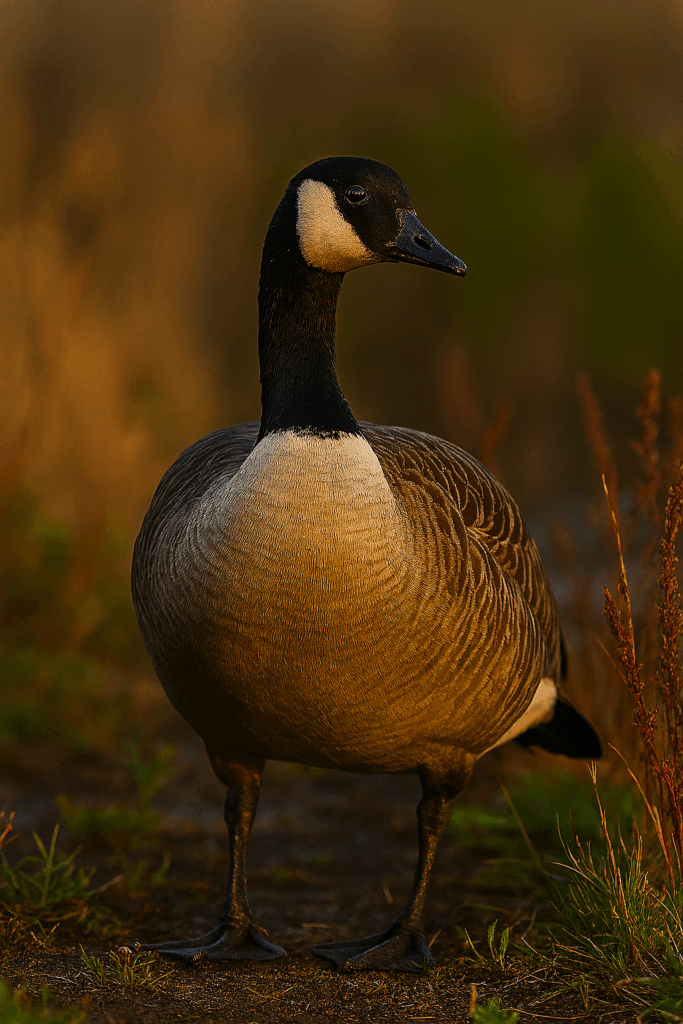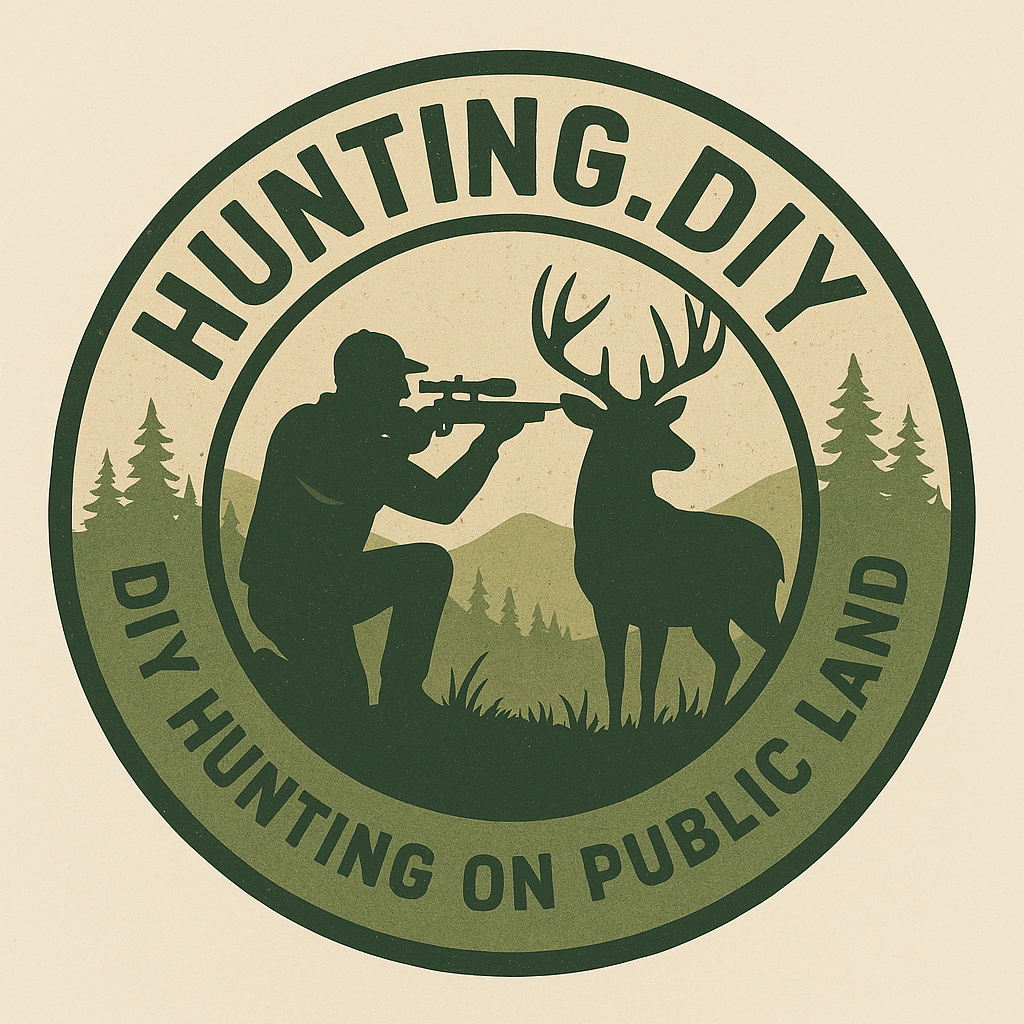Goose DIY Hunting Guide & Tips
Goose hunting guide: Goose hunting on public land requires the right gear, smart tactics, and local knowledge to succeed—this guide covers everything you need for effective DIY goose hunts.

Species Classification
Geese belong to the Anatidae family, alongside ducks and swans. The most common target is the Canada goose (Branta canadensis), but DIY hunters also encounter white-fronted geese and specklebellies (lesser snow geese). All geese share fierce family bonds and seasonal migrations that make them predictable—if you’re willing to learn their flight paths and staging areas. This is your chance to master every honk and wingbeat.
Physical Description
Canada geese are hefty—adults weigh between 8 and 14 pounds with wingspans up to 6 feet. They sport a black head and neck with a signature white chinstrap, brownish-gray body feathers, and pale underbellies. White-fronted geese are smaller, with a white face patch and orange legs, while snow geese are stocky white birds with black wingtips. Watch details: body size, head markings, and bill shape tell you exactly what you’re calling in.
Distribution and Habitat
Geese migrate thousands of miles between northern breeding grounds in Canada and Alaska to southern wintering sites across the U.S. The best public-land hunting zones include flooded agricultural fields, river valleys, and coastal marshes. In spring, concentrate on Prairie pothole regions; in fall, hunt along river corridors and managed waterfowl impoundments. A sharp eye on weather forecasts will reveal cold fronts that push flocks into lower elevations.
Season Dates and Regulations
Waterfowl seasons are dictated by federal frameworks and then carved up by each state. Generally, early teal season opens in mid-September, with split goose seasons running from late September through December. Federal frameworks release zones A, B, C, and D with specific bag limits—check the latest Migratory Bird Regulations before you load your decoys. Breaking the rules has one outcome: a knockout penalty from wildlife officers.
Best Hunting States/Regions
South Dakota’s prairie potholes hold massive spring and fall flights, but public ground is limited—arrive pre-dawn. Nebraska’s Central Flyway fields offer shotgun-friendly fields around Platte River floodplains. In the Mississippi Flyway, Arkansas rice fields refill after harvest, packing in honkers by the thousands. Pacific Flyway hunters should pound California’s Central Valley refuges for early-season snows and white-fronts.
Hunting Equipment (Gun and Ammo)
A 12-gauge shotgun with a modified or improved cylinder choke is the workhorse. Load steel or approved alloy shot in sizes BB to #2 for geese—don’t risk cripples with undersized shot or soft lead. Carry at least 40 rounds in your vest and additional shells in a waterproof ammo pouch. Bring a stout retriever or a solid bump board—wetland retrieval can kill every time if you don’t have the right gear.
Hunting Methods and Techniques
Spread 20 to 30 shell decoys in a U or J pattern, anchored so they ride naturally in currents. Place full-body floating birds at the front and silhouettes behind to mimic feeding flocks. Sit tight in a layout blind or pit, blending mud and vegetation, and call sparingly—just short, low “honks” timed with passing flocks. When birds commit below 40 yards, mount and fire smoothly at the lead bird’s head or neck area for quick drops.
Licenses and Tags
You need a valid state hunting license, HIP certification, and federal duck stamp—not a separate tag but a stamp that unlocks your waterfowl privilege. Some states require additional habitat stamps or zone permits. Buy online before season opens; these sell out faster than you can load your call. Keep all paperwork on your person—no electronic copies unless explicitly allowed by your state agency.
Diet and Feeding
Geese feed heavily on waste grain—corn, rice, and wheat—in harvested fields at first light and last light. They also graze grass and aquatic plants in marsh edges. Locate roosting ponds within three miles of feeding fields; geese return to water to rest and preen. Scout fields for fresh droppings and wing scratch marks. A decoy spread placed downwind of feeding grounds maximizes visibility as honkers wheel in.
Reproduction and Life Cycle
Canada geese nest in spring near water—lakes, rivers, and gravel bars. Females lay 4–7 eggs, incubate for about 25 days, and lead goslings to water within hours of hatching. Goslings fledge by mid-summer; families stick together through fall migration. Juveniles disperse the next spring, often forming their own flocks. Targeting immature birds early in the season can bolster your limit before big flocks arrive.
Population Status
Canada goose numbers exploded after mid-20th-century conservation efforts; they’ve become nearly overabundant in many flyways. Wildlife agencies monitor populations annually and adjust harvest regulations to keep numbers in check. White-fronted and snow geese populations also rise; special conservation order seasons sometimes allow extended shooting. Use agency waterfowl reports to pick units where bag limits are generous.
Meat Quality and Processing
Goose meat is dark, rich, and gamey—pair it with bold marinades or brine overnight to tame the flavor. Field dress immediately, pluck, and bleed in cool water. Quarter the bird, breaking at joints; remove pin feathers before cooking. After butchering, store in a refrigerator at 36°F and consume within four days or freeze by slicing breasts and legs into meal-ready portions.
Safety Considerations
Blind-hunting waterfowl demands stealth and situational awareness. Wear camo that covers your face, hands, and shotgun barrel to avoid spooking birds. Anchor decoys securely in currents; an unsecured pattern means sunk hopes. Check for submerged hazards—logs, drop-offs, and ice in early season. Always carry a whistle or VHF radio in case you need to call for help in remote marshes.
Tracks and Sign
Unlike deer tracks, goose tracks are webbed and triangular, 3 to 4 inches wide, with toe drags in soft mud. Look for clustered flocks of prints around roost ponds and feeding fields. Wing feathers scattered on the ground signal landing zones. Fresh droppings in feeding areas reveal recent activity. Follow these signs at dawn for guaranteed flocks to call in.
Similar Species – How to Distinguish
Don’t mistake ducks for geese—geese are larger with long necks and heavier bills. Canada geese have a distinctive white chinstrap; white-fronted geese have a white facial blaze and orange legs. Snow geese are pure white or blue morph with black wingtips. Misidentifying can cost you time and shells—know your silhouettes and calls before season kickoff.
Embrace the early mornings, cold fingers, and endless honks. This is DIY goose hunting—no handouts, no excuses, just you against the skies.
